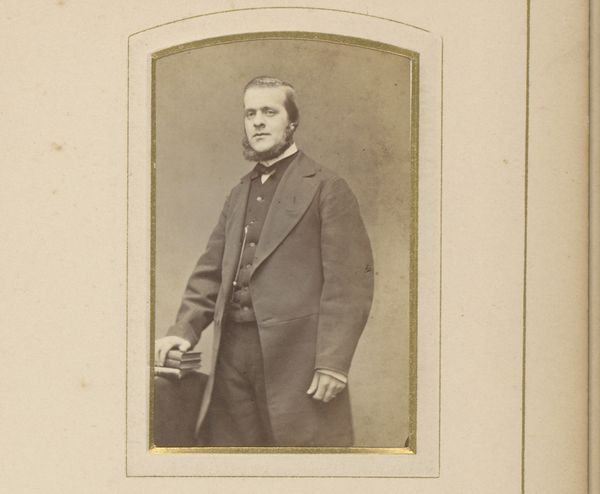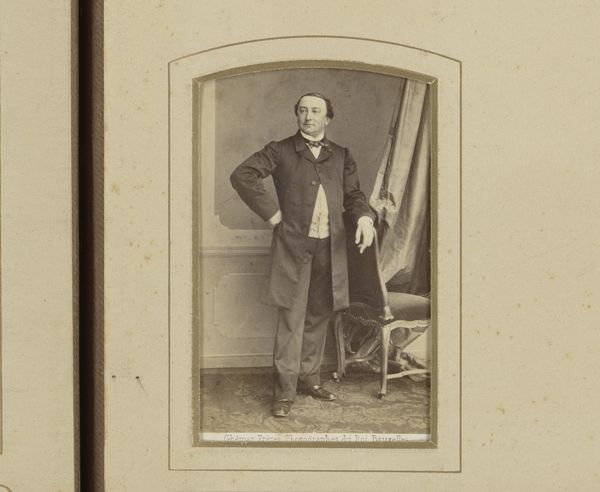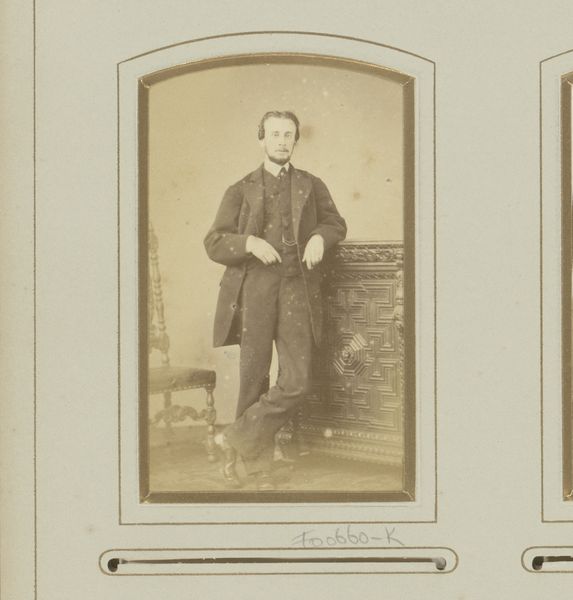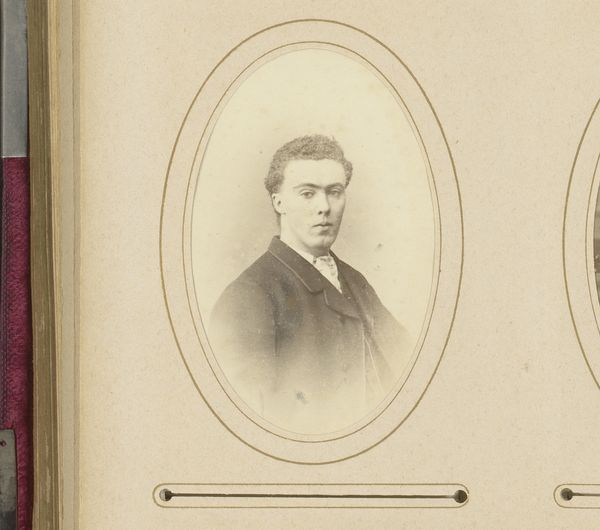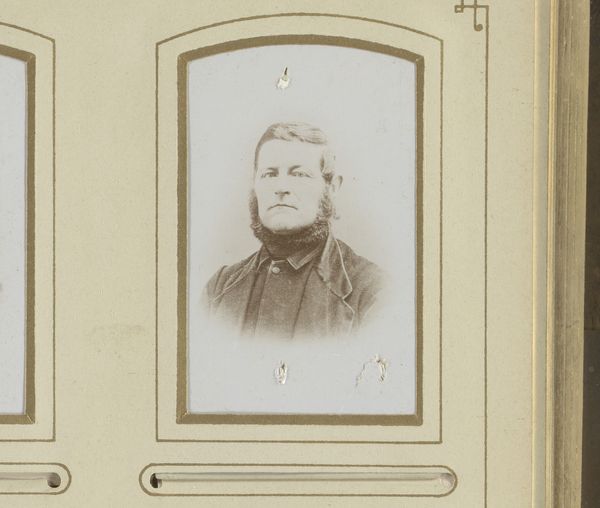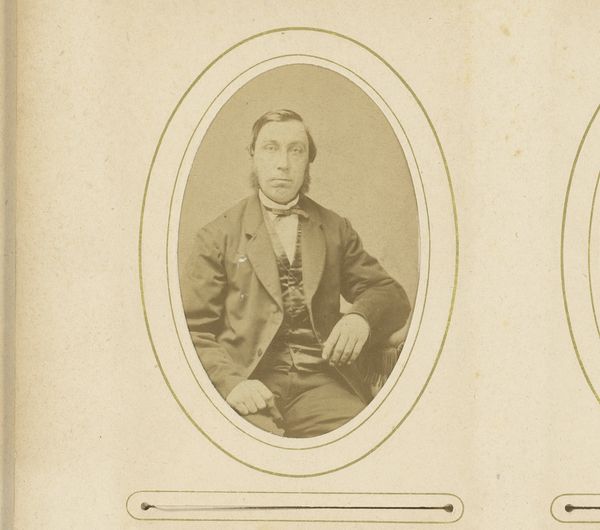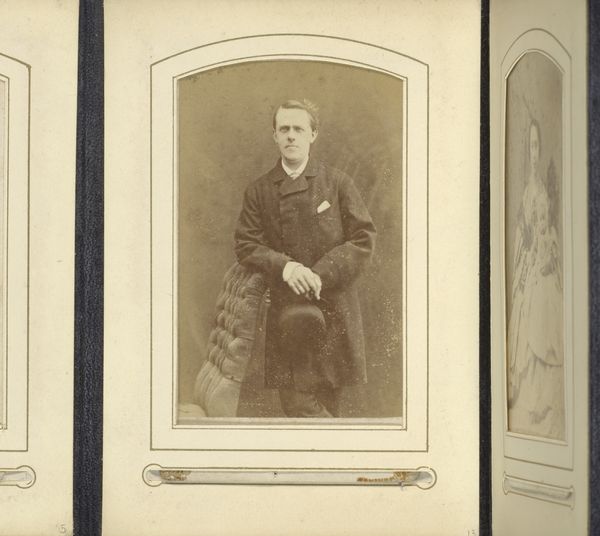
Dimensions: height 84 mm, width 51 mm
Copyright: Rijks Museum: Open Domain
Curator: Immediately, there's a somber stillness, an almost ethereal quality, in the monochrome gradations of this photographic portrait. Editor: Precisely! We're looking at "Portret van een man, zittend aan een tafel," or "Portrait of a Man, Sitting at a Table," attributed to Louis Robert Werner and dating roughly from 1861 to 1866. It's a gelatin silver print, part of the Rijksmuseum's collection. Curator: The formality is striking, yet the pose itself feels remarkably human, slightly slumped and relaxed. The composition—the framing, the lighting—focuses us so intently on his face. Editor: Yes, this form of portraiture rose in popularity alongside broader social changes. The increasing affordability of photography meant a wider segment of the middle class could commission images of themselves. Think of it: visual representation democratized. Curator: Interesting! While I can’t help but focus on the surface textures. Notice how Werner renders fabric. His coat and pants convey a tactile density against the stark simplicity of the background. It directs our eyes through subtle modulations of shade and highlights. Editor: Indeed! The detail made possible by this photographic process must have captivated viewers at the time. In the romantic style that Werner was known for, it provided almost documentary evidence, which boosted claims of truth and scientific authority, further solidifying the medium's rise in influence during this pivotal moment of industrial and societal transformation. Curator: And yet the photographic eye sees things differently. It's not simply a copy. Notice how the almost shallow depth of field subtly softens the background, pushing the sitter forward, isolating and imbuing him with more presence and import. Editor: The way individuals perceived themselves, too, underwent a dramatic shift in this period, influenced by new fields of science and evolving socio-political ideologies. Representation through these early portraits were vital affirmations of personhood during an era of substantial historical events. Curator: Precisely. The meticulous detailing paired with subtle ethereal softening grants both immediacy and historical gravitas to the representation of a singular, yet universal, human presence. Editor: Considering how such photographs aided in constructing and shaping identity during times of change allows us to truly appreciate this particular specimen held at the Rijksmuseum.
Comments
No comments
Be the first to comment and join the conversation on the ultimate creative platform.
